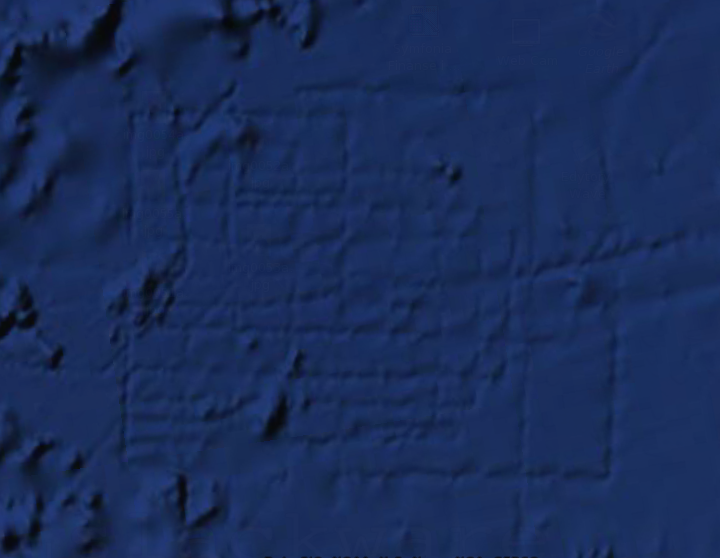While Google's mapping program is turning up many formerly hidden objects, a lost city under the sea isn't one of them, says a company spokesperson.
The addition of sea-floor topography to Google Earth earlier this month revealed what some claim could be the lost city of Atlantis.
But Google says the undersea grid lines spotted by aeronautical engineer Bernie Bamford while browsing Google Earth's ocean maps are data artifacts rather than sunken streets.
"[W]hat users are seeing is an artifact of the data collection process," a Google spokesperson said in an e-mailed statement. "
Bathymetric (or sea-floor terrain) data is often collected from boats using sonar to take measurements of the sea floor. The lines reflect the path of the boat as it gathers the data. The fact that there are blank spots between each of these lines is a sign of how little we really know about the world's oceans."
London's tabloid
The Sun on Friday
published screenshots from Google Earth showing what resembles a city street grid on the ocean floor west of Morocco, in an area known as the Madeira Abyssal plane.

© Google EarthAtlantis on Google Earth
According to
The Sun, the site in question lies at the coordinates
31°15'15.53" N, 24°15'30.53" W.
Google said the area mentioned in
The Sun article reflects a mixture of bathymetric data from sonar and satellite altimetry, which provides an estimate of the ocean floor topography based on wave height. The intersection of these two data sets, which don't align perfectly, is what produces the appearance of a street grid. Similar grid lines can be found in other parts of the ocean where the sea floor has yet to be completely mapped, such as near Hawaii. Many historians doubt that Atlantis existed, but that hasn't stopped people from trying to find it.
In his book Timaeus, Plato describes Atlantis thus: "This great island lay over against the Pillars of Heracles, in extent greater than Libya and Asia put together, and was the passage to other islands and to a great ocean of which the Mediterranean sea was only the harbor; and within the Pillars the empire of Atlantis reached in Europe to Tyrrhenia and in Libya to Egypt."
Plato wrote that the island was struck by violent earthquakes and floods and subsequently sank beneath the sea.
One of the Pillars of Heracles is the rock of Gibraltar, which suggests that the sea west of Morocco would be a likely place for the city to be found, if it ever existed.
Although Google's explanation effectively rebuts
The Sun's story, the growing importance of geospatial applications like Google Earth and Google Maps for scientific, cultural, social, and security endeavors shouldn't be discounted.
Thanks to the widespread access to satellite imagery made possible by tools like Google Earth, people have discovered
new species,
hidden marijuana fields, a
suspected shipwreck site, and
an old Roman villa. And they're using geo-applications
to protect human rights and
the environment, and locate
Chinese submarines.
As one of Google's attorneys observed last year in the company's recently successful motion to dismiss an invasion-of-privacy lawsuit, "Today's satellite-image technology means that even in today's desert, complete
privacy does not exist."

Comment: SoTT called this one.